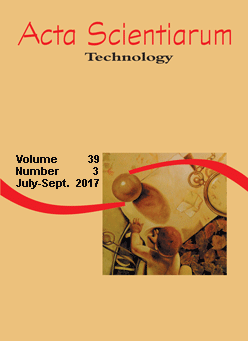<b>Steel waste used in reducing emissions of nitrous oxide
DOI:
https://doi.org/10.4025/actascitechnol.v39i3.30886Palavras-chave:
greenhouse gas, reuse, characterization, catalyst, pollution.Resumo
Â
Gross wastes of the steel industry were evaluated as catalyst for the reduction of nitrous oxide. The wastes were obtained from steel mill residues (MS), lamination (LA), quenching (QC) and blast furnace powder (BF) and characterized by X-ray fluorescence (XRF), X-ray diffraction (XRD) and hydrogen temperature-programmed reduction (H2-TPR). Results revealed Si, Ca, S, Rh, Fe, Cr, Mn and Cu for all wastes, with iron featuring the greatest amount. H2-TPR analyses showed H2 consumption peaks associated with rhodium oxide, also detected by XRF. The content of comparative rhodium oxide in samples was: MS > LA > QC > BF. N2O conversion increases with increase in temperature for all catalysts. The activity of the catalysts MS > LA > QC > BF was related to rhodium oxide rate in the wastes.
Â
Downloads
Downloads
Publicado
Como Citar
Edição
Seção
Licença
DECLARAÇíO DE ORIGINALIDADE E DIREITOS AUTORAIS
Declaro que o presente artigo é original, não tendo sido submetido í publicação em qualquer outro periódico nacional ou internacional, quer seja em parte ou em sua totalidade.
Os direitos autorais pertencem exclusivamente aos autores. Os direitos de licenciamento utilizados pelo periódico é a licença Creative Commons Attribution 4.0 (CC BY 4.0): são permitidos o compartilhamento (cópia e distribuição do material em qualqer meio ou formato) e adaptação (remix, transformação e criação de material a partir do conteúdo assim licenciado para quaisquer fins, inclusive comerciais.
Recomenda-se a leitura desse link para maiores informações sobre o tema: fornecimento de créditos e referências de forma correta, entre outros detalhes cruciais para uso adequado do material licenciado.



















